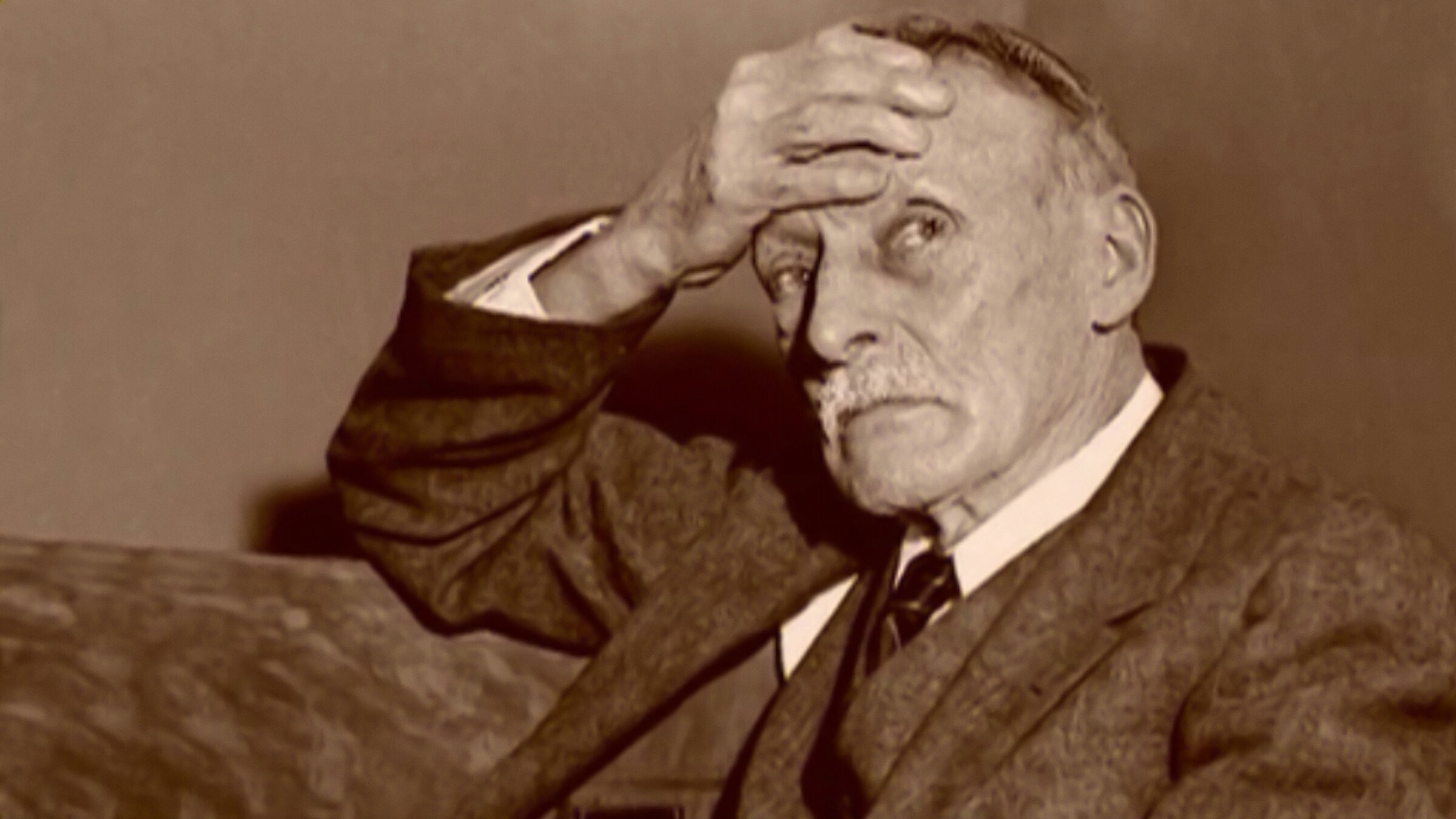The Brooklyn Vampire: How Albert Fish Became America's Boogeyman

The Monster Behind the Monikers: Albert Fish's Terrifying Legacy
During the late 1800s and early 1900s, one man succeeded in haunting multiple generations. His actions were horrifying enough, but the names people gave him made it worse. The Moon Maniac. The Boogeyman. The Werewolf of Wysteria. The Brooklyn Vampire. Each title carried its own brand of terror.
A Disturbing Beginning: The Birth of Hamilton Howard Fish
Albert Fish entered the world on May 19, 1870, in Washington, D.C. His father had reached 75 years old when Albert was born, making him 43 years older than his mother. Even by Victorian standards, that age gap was unusual. Today, it would definitely turn heads. Albert was the youngest of four children who made it through childhood. His siblings were Walter, Annie, and Edwin.
He chose to go by Albert to honor a deceased sibling. The name change also helped him escape the nickname that followed him from the orphanage: "Ham and Eggs." That moniker clung to him for years like a persistent shadow.
A Family Tree Plagued by Mental Illness
Fish inherited more than his father's name. Mental illness ran through his family like a genetic curse. His uncle received a diagnosis of mania. One brother landed in a state mental hospital. His sister Annie carried the label of having a "mental affliction." Three additional relatives were also deemed mentally ill. His mother experienced something even more troubling. She saw things that weren't there and heard voices that didn't exist. Medical professionals call these aural hallucinations.
This was an era when doctors might diagnose you with "ghosts in your blood" and prescribe cocaine as treatment. Mental health understanding was practically nonexistent, leaving children like Albert vulnerable from their very first breath.
The Orphanage Years: Where Everything Went Wrong
Albert's father died in 1875 from a heart attack. At 80 years old, he had lived longer than most people could expect, even by today's standards. After his death, his mother placed young Albert in an orphanage, still carrying that "Ham and Eggs" nickname.
Fish later described his time there with disturbing clarity: "I was there 'til I was nearly nine, and that's where I got started wrong. We were unmercifully whipped. I saw boys doing many things they should not have done." The abuse became routine, and Albert began developing a troubling response to the beatings. He started to enjoy them. For a child to find pleasure in pain represents a profound psychological break that should have raised immediate concern.
A Mother's Rescue and New Dangers
By 1880, Fish's mother had secured a government position and could finally remove her son from the orphanage. But the damage was already done. In 1882, when Albert was 12, he began a relationship with a telegraph boy. This older boy introduced Albert to disturbing sexual practices including urolagnia and coprophagia.
At this point, the warning signs were impossible to ignore. A 12-year-old who had learned to enjoy physical abuse and was now engaging in extreme sexual behaviors needed immediate intervention. Instead, his behavior escalated.
The Public Bath Obsession and Early Predatory Behavior
Fish began frequenting public baths, spending entire weekends watching other boys undress. This voyeuristic behavior became a regular pattern. He also started writing obscene letters to women whose names he found in classified advertisements and matrimonial agencies. This was essentially the Victorian equivalent of sending unsolicited explicit messages to strangers online.
These early behaviors established a pattern of predatory conduct that would only intensify with time.
Moving to New York: A Predator Finds His Hunting Ground
By 1890, Fish relocated to New York City. He later admitted that he turned to prostitution and began sexually assaulting young boys. The city provided him with both anonymity and access to vulnerable children.
Marriage and a Double Life
Eight years later, his mother arranged a marriage between Albert and Anna Mary Hoffman, a woman nine years his junior. This was common practice in their social circle, where families often facilitated unions. The couple would go on to have six children: Albert, Anna, Gertrude, Eugene, John, and Henry Fish.
Fish worked as a house painter, a profession that gave him access to different neighborhoods and homes. During this time, he continued molesting children, targeting boys younger than six years old. His family life provided the perfect cover for his criminal activities.
The Wax Museum Incident: A New Obsession Takes Hold
Fish later recounted a pivotal moment when an adult partner took him to a wax museum. There, he encountered a display showing a bisected penis. This anatomical exhibit triggered something profound in his already disturbed mind. From that moment forward, he became fixated on sexual mutilation.
This incident marked another escalation in his psychological deterioration. What had begun as inappropriate sexual behavior was now evolving into something far more dangerous and violent.
The Thomas Kedden Incident: A Turning Point Toward Extreme Violence
Around 1910, Fish encountered Thomas Kedden, a 19-year-old intellectually disabled man. Fish brought Kedden to his residence, where they developed what appeared to be a sadomasochistic relationship. Whether Kedden consented to these activities remains unclear given his mental capacity.
After ten days, Fish transported Kedden to an abandoned farmhouse where he tortured him for two weeks. The violence culminated when Fish severed half of Kedden's penis. Fish later recalled, "I shall never forget his scream, or the look he gave me."
Fish had originally planned to kill Kedden, dismember his body, and transport it home. However, he worried that the summer heat would attract unwanted attention. Instead, he poured peroxide over the wound, wrapped it with a Vaseline-covered handkerchief, left a $10 bill, kissed Kedden goodbye, and departed.
This incident represents Fish's first documented act of extreme physical mutilation against another person.
Abandonment and Psychological Breakdown
In 1917, Fish's wife left him for the handyman who had been living with their family. She took most of their possessions but abandoned the children, leaving Albert to raise six kids alone. This abandonment triggered a severe psychological decline.
Like his mother before him, Fish began experiencing auditory hallucinations. He believed he was receiving direct instructions from John the Apostle. His self-harm escalated dramatically. He began inserting needles into his groin and abdomen, eventually accumulating at least 29 needles embedded in his pelvic region. He also repeatedly struck himself with a nail-studded paddle and once inserted lighter fluid-soaked wool into his rectum and ignited it.
A Father's Disturbing Boundaries
Despite his severe mental illness, Fish never physically harmed his own children. However, he did encourage them and their friends to use his nail-studded paddle on him, which was deeply inappropriate and traumatic for young minds to witness.
Around this period, Fish began contemplating cannibalism. He started experimenting by consuming raw animal meat, sometimes serving it to his children for dinner.
The Escalation: When Delusion Became Deadly
By 1919, Fish's behavior reached new levels of depravity. He deliberately targeted mentally handicapped individuals and African Americans, believing these victims "would not be missed." His hallucinations had evolved into what he perceived as divine commands. He now believed God was instructing him to torture and sexually mutilate children.
Fish assembled what he called his "implements of hell": a meat cleaver, butcher knife, and handsaw. These tools would become central to his most horrific crimes.
The Grace Budd Case: A Family's Nightmare
In May 1928, 58-year-old Albert Fish responded to a newspaper advertisement placed by Edward Budd, who was seeking employment. Fish arranged to visit the Budd family, initially planning to murder Edward. However, when he met Edward's 10-year-old sister Grace during his second visit, his plans changed.
Fish fabricated a story about attending his niece's birthday party and convinced the family to let Grace accompany him. She left with Fish and never returned home. In a bizarre twist, authorities arrested another man for her disappearance, though he was later acquitted.
The Confession Letter That Sealed His Fate
Six years later, in 1934, Fish sent an anonymous letter to the Budd family detailing Grace's fate. He described strangling her to death, dismembering her body, and consuming her remains over nine days. He emphasized that she had remained a virgin, as if this detail somehow lessened his crime.
Police traced the letter back to Fish through the distinctive stationery. Upon arrest, he immediately confessed to Grace's murder, claiming he had not sexually assaulted her but had experienced involuntary ejaculations during the strangulation.
Additional Victims Come to Light
During custody, Fish confessed to murdering 9-year-old Francis McDonnell. In July 1924, Francis's body was discovered hanging from a tree by his suspenders. He had been sexually assaulted and partially mutilated. Fish later admitted he had intended to castrate the boy but fled when he heard people approaching.
Fish also confessed to killing 4-year-old Billy Gaffney in February 1927. Billy had been playing with a 3-year-old neighbor in their apartment hallway when both children disappeared. The younger child was found on the roof, claiming "the boogeyman took Billy." In a letter to his attorney, Fish detailed how he tortured Billy, consumed his blood, and cooked portions of his body with vegetables and bacon, eating the remains over four days.
The Trial: Sanity Versus Justice
Fish's trial lasted ten days. He pleaded insanity, citing his auditory hallucinations and describing his cannibalism as a form of communion. The court determined he was abnormal but legally sane.
One witness made the disturbing claim that Fish was not "mentally sick" and that his perversions were "socially perfectly alright," asserting he was "no different from millions of other people," including some prominent and successful individuals. This testimony remains deeply troubling.
The jurors unanimously believed Fish was insane, but as one later explained, they felt he deserved conviction and execution regardless of his mental state.
The Final Chapter: Death at Sing Sing
Hamilton Howard "Ham and Eggs" Albert Fish was executed on January 16, 1936, in the electric chair at Sing Sing prison. He entered the execution chamber at 11:06 p.m. and was pronounced dead three minutes later. Witnesses reported that Fish helped the executioner position the electrodes on his body.
His final words were reportedly, "I don't even know why I'm here." Before his death, Fish wrote a three-page final statement and gave it to his lawyer. The attorney refused to reveal its contents, stating, "I will never show it to anyone. It was the most filthy string of obscenities that I have ever read."
With Fish's execution, one of America's most disturbing criminal cases came to a close, but the horror of his crimes would continue to haunt the families of his victims and the public consciousness for generations to come.





